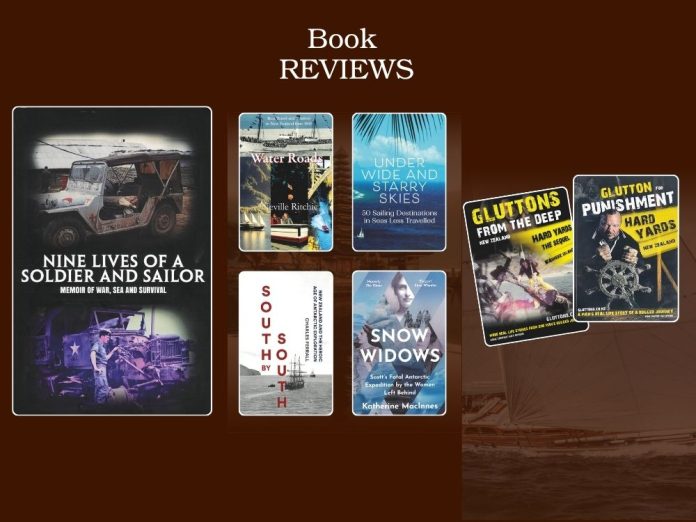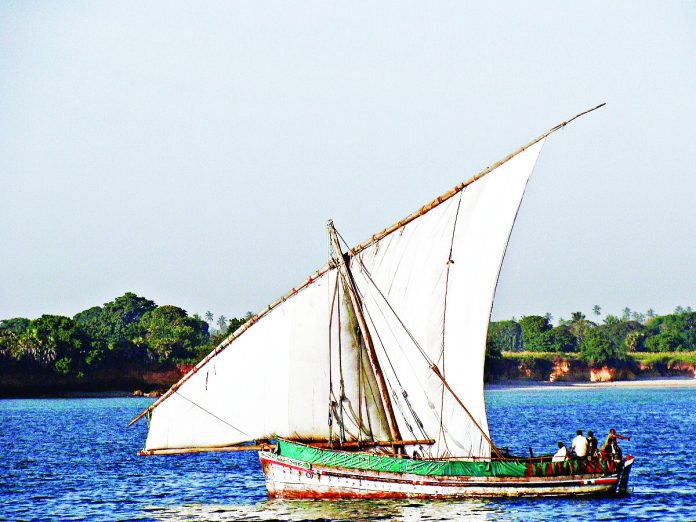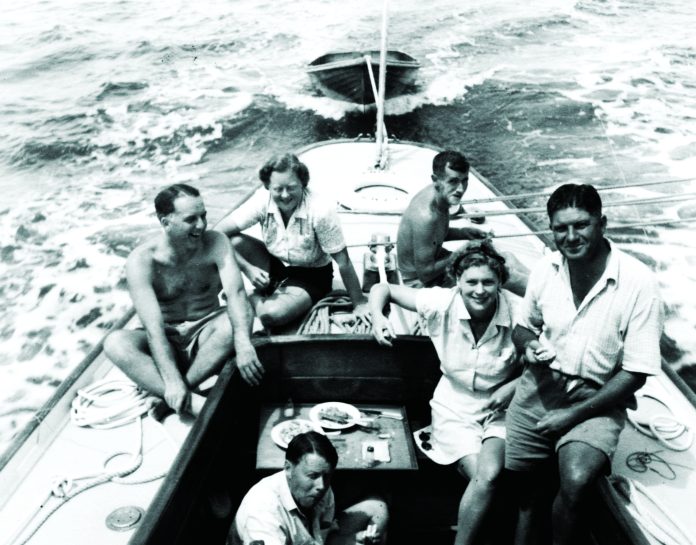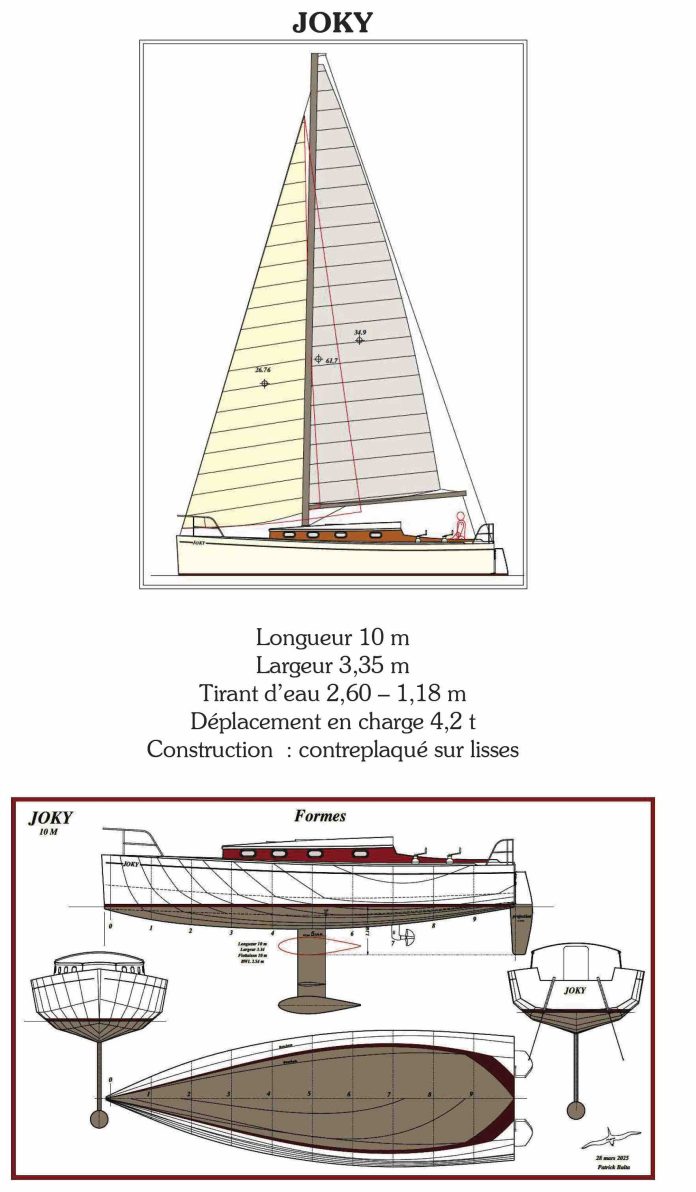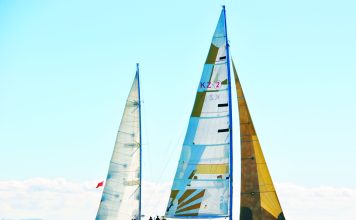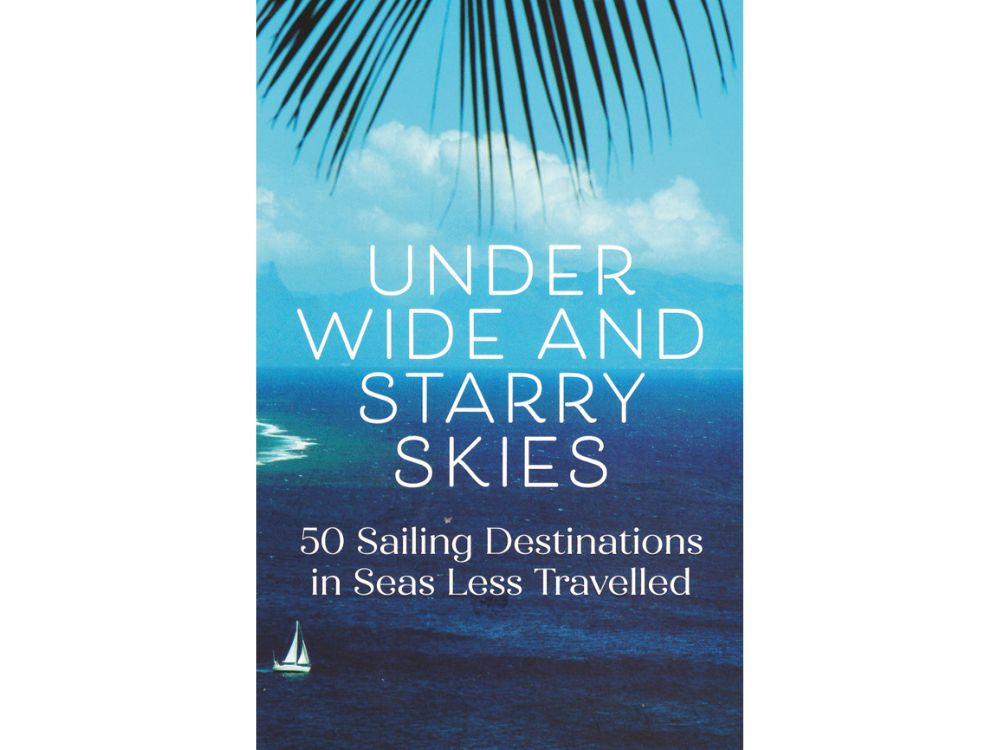
Under wide and starry skies – 50 sailing destinations in seas less travelled
By Nicholas Coghlan – Adlard Coles
Do you know of the fine anchorages in the Fernando de Noronha Archipelago, off the northeastern tip of Brazil? Or the varied delights and challenges of Kabashima Island and the Goto Rego Archipelago in Japan? Or what it’s like to sail at Alkwasir Island on the Blue Nile in Khartoum? Me neither.
And that’s the great attraction of this wonderful sailing book. Which, even if you never actually visit these places, as author Nicholas Coghlan did in a succession of 27-foot (!) yachts, will stand as a remarkable work offering vicarious travel. Complete with many oddities – like the golf course on a remote island’s airport runway.
It’s a colourful and inspirational book. Practical too, with each destination ending with pages titled If you go, containing all the really useful, real-world gen, such as Entry Formalities, Getting There, Distances, Weather, Anchorages, Charts, Reference, and general knowledge too. Great photos and colourful maps (but not nautical charts) included as well.
As Nicholas says in the introduction, “If you own a sailing boat, no matter how small or unsuitable, chances are that you’ve wondered what it would be like to throw in your job, cast off, and sail over the horizon.”
And even if he admits, “The selections made – after 70,000 miles of cruising with my partner Jenny… are highly personal,” they all amount to a superlative travelogue. And one well worth tagging along with them. Go for it.
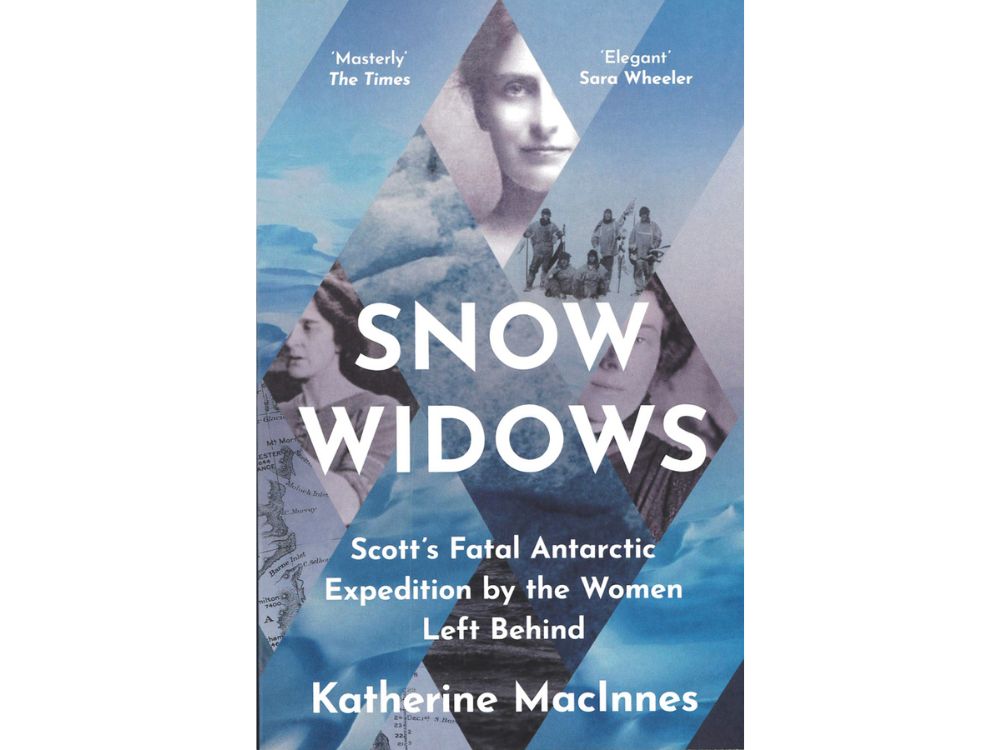
Snow widows
By Katherine MacInnes – William Collins Publishers
In this complementary and necessary foil to the common viewpoints in the epics of Antarctic exploration, British author Katherine MacInnes offers the personal, intimate, contradictory and complicated stories of the women left behind by Robert Falcon Scott’s ill-fated expedition to the South Pole, 1910–1913.
These women are all presented as figures of great interest and give us a unique perspective on the mores of the times. For example, Scott’s own wife, Kathleen née Bruce, was an accomplished sculptor as well.
The book opens with an ‘interview’ with the preserved feminine figurehead of Scott’s ship Terra Nova – ironic in that she was the only woman on the expedition.
The book, written in present tense for immediacy, includes many startling juxtapositions of text in passages like this:
Hilda Evans, Christchurch: Hilda prefers town life, or at least, Christchurch society. In Christchurch, she is a ‘somebody’, her father is a wealthy and influential man…
12 November 1912, Ross Ice Shelf: It is six o’clock in the morning when the glaciologist Charles Wright’s sledge swerves sharply right – the Indian mules kick up a cloud of drift that powders the air…
All this is given added poignancy in that Peary’s contemporaneous expeditions towards the North Pole, referenced in the opening quote to the book, relied on and exploited Inuit women to achieve their successes.
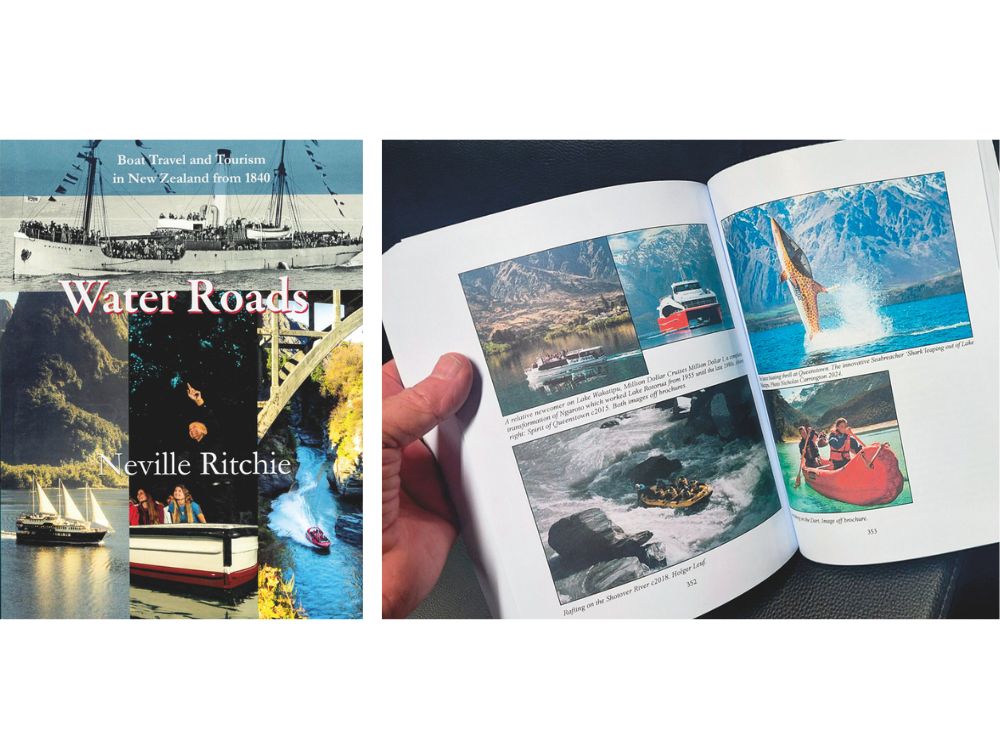
Water roads – boat travel and tourism in New Zealand from 1840
By Neville Ritchie – Last Side Publishing
We all have feel-good childhood memories of a boat trip. Usually, to do with family holidays. They are the positive punctuation marks of our upbringing.
Neville Ritchie has found all these – well, the boats that carried us – and given due regard to their important part of New Zealand’s and New Zealanders’ heritage.
Jetboats, hydrofoils, hovercrafts, passenger ferry steamers, restored sailing scows – Neville has comprehensively listed them all, with each having a story of its own particular, and in many cases, peculiar working life. He was a long-time historian for the Department of Conservation (they have a heritage function too), and his interest in old boat travel was deepened by the many trips to historical sites – whaling and logging stations, remote mines in Fiordland, early settlements on Sub-Antarctic Islands – that were, and often still are, only accessible by boat.
This is living history – and boating history – at its finest. Passionately researched, authoritatively written, and carrying rare photographs, plus thousands of splendid memories too.
With photo spreads like this, what’s not to like? A fulsome and rewarding repository of boating tales, perfect for any mariner’s home or saloon library.
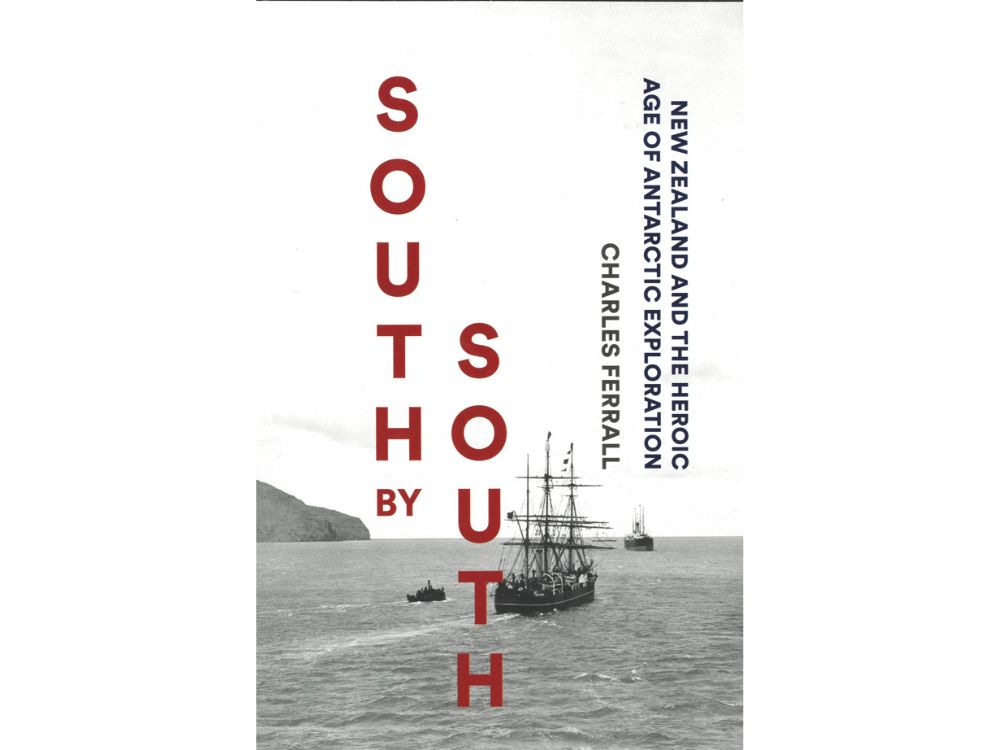
South by South
By Charles Ferrall – Te Herenga Waka Victoria University Press
On the Banks Peninsula in Lyttelton, there’s a bronze statue of a husky in the main street; in Akaroa, a bust of Antarctic explorer Frank Worsley (Shackleton’s helmsman of the James Caird). They both have shiny noses from many affectionate touches.
South by South, this book by Charles Ferrall, comprises an equally respectful but way more in-depth appreciation of this country’s contribution to the heroic age of Antarctic exploration. The book’s unique perspective is that it is told mostly through the eyes (and correspondence) of prominent New Zealanders who “forged deep connections with Antarctic explorers” – Joseph Kinsey, Charles Bowen and Leonard Tripp.
As a professor at Victoria University, Wellington, Ferrall’s text skilfully weaves the links between New Zealand’s Antarctic experience and the international literature on this enduringly fascinating subject.
Rebecca Priestly, author of Fifteen Million Years in Antarctica, says, “This book brings to life the story of Christchurch, Lyttelton in a way not done before. And Charlie’s literary focus allows him to see things that others might not have noticed in these sources.”
The book contains many fine and seldom-seen photographs too.

Nine lives of a soldier and sailor
By Kelvin Davis – Imri Publishing
A reminder that we have heroes among us, living remarkable lives, and with extraordinary stories to tell. And a reminder, too, that they often come from humble origins.
Like being a simple farm boy at Omokoroa: “We travelled to school either on horseback or cadged a ride on the local cream truck as it went about the district… Dad sold the farm at the end of 1951 for 7,000 pounds….”
Kelvin Davies (not the politician) is a former Medical Chief Petty Officer and Navy Ships Diver with the New Zealand Navy. He served in the Vietnam War and recounts the bonds made under duress with American servicemen – and broken when they died. With his camera, he also bears unflinching witness to the horrors of war. His subsequent commercial diving career is equally intriguing. Consider a sub-chapter headed Diving Hastings Sewer. We’ll leave it to you to read the details.
Told in a direct, matter-of-fact and unassuming style, this is still a gripping yarn. We could all learn a few things from Kelvin Davis.
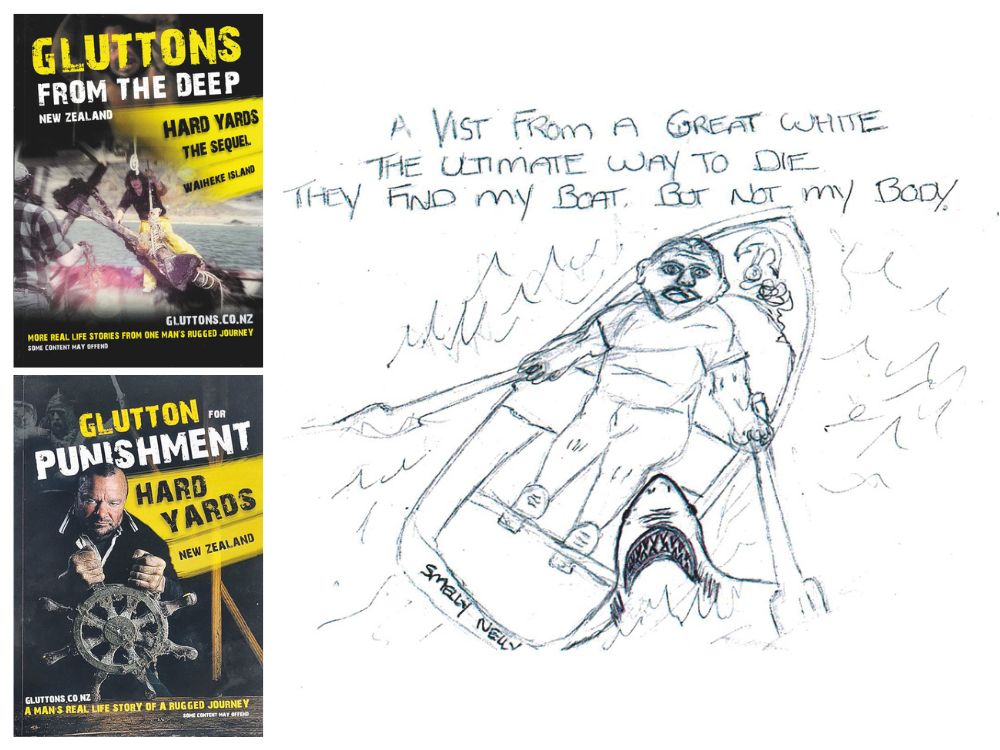
Gluttons
Glutton for punishment – hard yards New Zealand
Glutton from the deep – hard yards the sequel Waiheke Island
By Roger Reardon – Self-published (available on Amazon or Facebook)
Hard case eccentrics are becoming a rare breed. We need to honour them more, I reckon. They must not fade away.
Roger Reardon obliges by telling his own story in two no-bull instalments. Coverline on both books – “A man’s real-life story of a rugged journey. Some content may offend.”
He’s a living legend on Waiheke Island and the founder and chief grunter of the Gluttons, a group of non-compromising blokes, aka the ‘Human Earth Movers.’
His boating exploits are many and varied – and rugged, of course. From deep sea fishing to recovering anchors from wrecks; memorable gigs of all kinds; and rowing his clunky dinghy Smelly Nelly from Waiheke to Mayor Island (well, sort of; there’s a shipwreck involved), they are all well worth sharing. Home truths aplenty – and about himself.
He’s a hard rock muso too – see his catalogue on Facebook. The books are illustrated with scary photos and Roger’s own drawings, like this. Cool, eh? Or should I say rugged?








